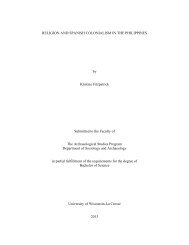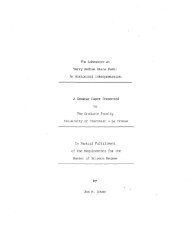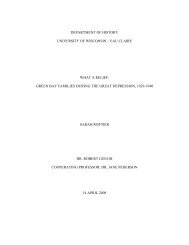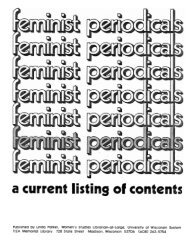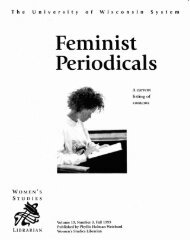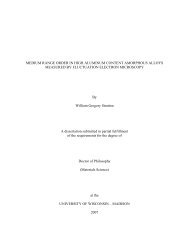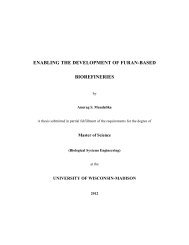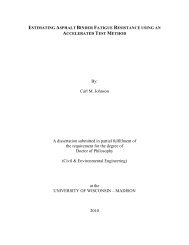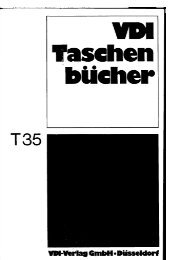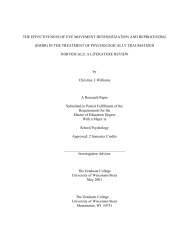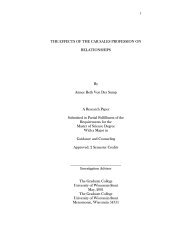Comics Aren't Just For Fun Anymore: The Practical Use of Comics ...
Comics Aren't Just For Fun Anymore: The Practical Use of Comics ...
Comics Aren't Just For Fun Anymore: The Practical Use of Comics ...
You also want an ePaper? Increase the reach of your titles
YUMPU automatically turns print PDFs into web optimized ePapers that Google loves.
Recine 14<br />
generationally, distancing themselves from earlier, more limited prescriptive models (Bourke 88). In<br />
light <strong>of</strong> this, it is perhaps ironic that the most prescriptive definitions <strong>of</strong> comics today come from the<br />
field <strong>of</strong> language education and applied linguistics. It would seem that many educators and linguists are<br />
quite eager to define the features that comics must have in order to be comics. Mario Saraceni, who<br />
wrote a scholarly book about comics for Routledge Press’ Intertext Linguistics Series, declares that<br />
word balloons, captions, and enclosed panels with distinct spaces between them are essential defining<br />
characteristics <strong>of</strong> comics (Saraceni 6-9). <strong>The</strong> Educomics Project, a European Union-sponsored<br />
initiative to promote TESOL comics pedagogy in Greece, Cyprus, Italy, Spain, and the UK, advises<br />
ESL/EFL instructors that comics must contain multiple images arranged in sequence (Retalis 3).<br />
Numerous other educators and linguists have suggested that comics must contain the elements listed<br />
above, must be drawn in a certain style, must cover certain subject matter, and so on.<br />
Leone Tiemensma, a teacher <strong>of</strong> ESL/EFL and child literacy advocate in South Africa, <strong>of</strong>fers a<br />
comprehensive overview <strong>of</strong> the modern characterization <strong>of</strong> comics that is most prevalent among<br />
linguists and TESOL pr<strong>of</strong>essionals. Tiemensma’s definition, which she advises educators to follow<br />
when seeking out comics for their classroom, can be paraphrased in brief as follows: <strong>Fun</strong>ctionally,<br />
comics should have a clear narrative. Structurally, comics should combine words and multiple strings<br />
<strong>of</strong> pictures, with pictures in a dominant role. Spatially, the panels should be separate with blank spaces<br />
between them, character language should be placed in word balloons, and narration should be placed in<br />
captions. Stylistically, comics should either use cartoony or realistic artwork (Tiemensma 4-6).<br />
Tiemensma’s definition, while limiting in some respects, properly characterizes a number <strong>of</strong><br />
TESOL-friendly comics that turn up in classrooms. <strong>The</strong> definition handily describes most <strong>of</strong> the work<br />
<strong>of</strong> cartoonist Jack Bradbury, whose comics have been distributed to language arts and ESL classrooms<br />
through the Maryland Comic Book Initiative (fig. 2.2.1) (“Maryland”). <strong>The</strong> episode <strong>of</strong> Runemaster<br />
Studios’ Lions, Tigers and Bears comic book in fig. 2.2.2 also matches this definition. Language arts



